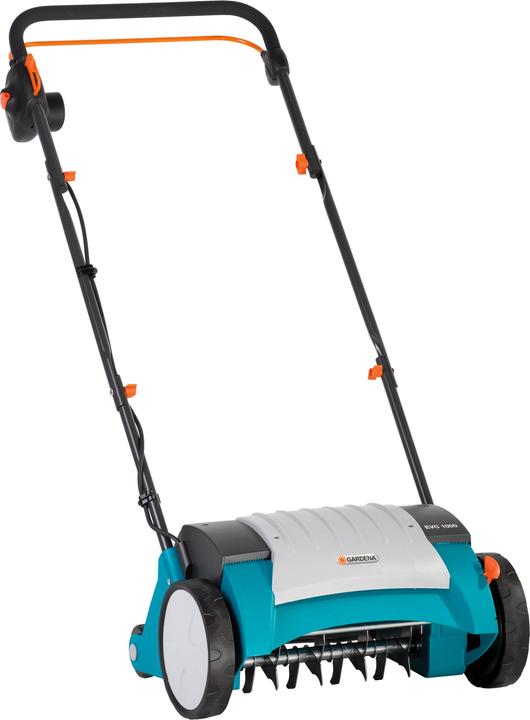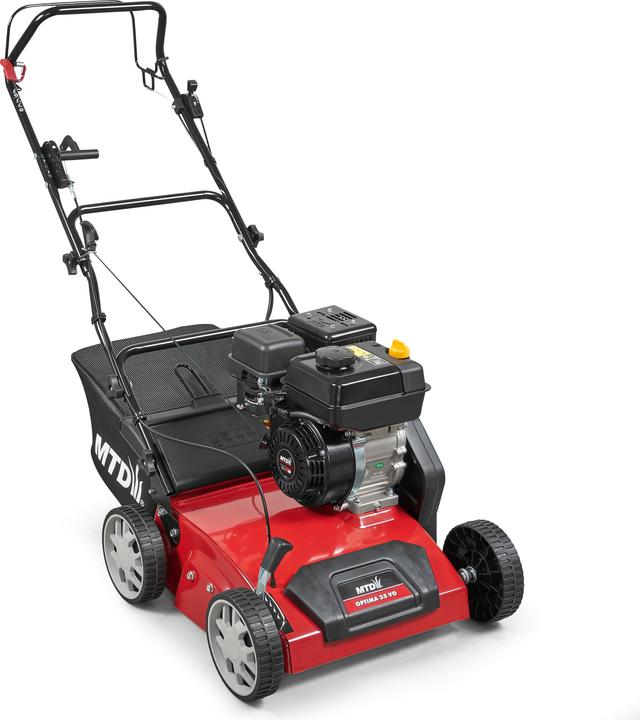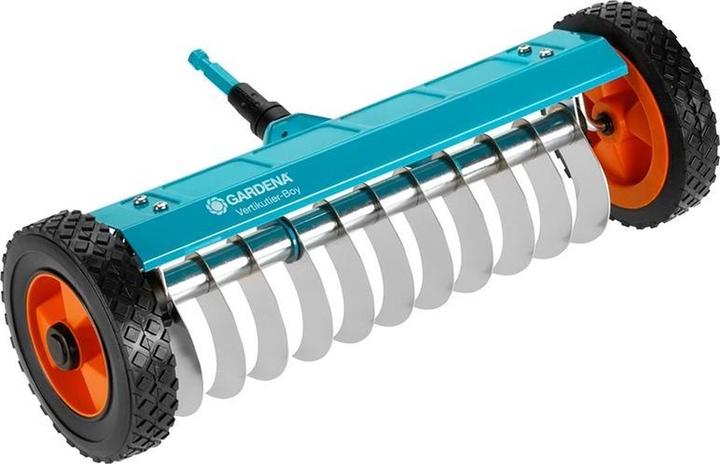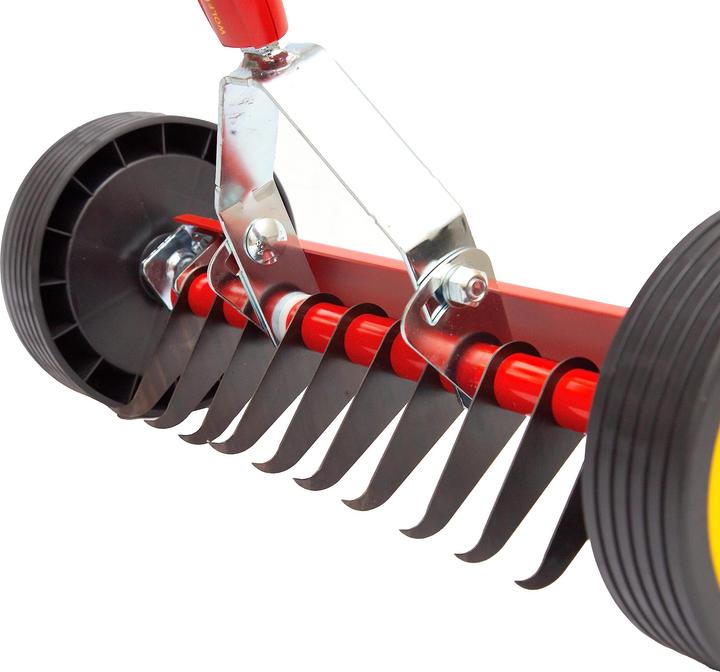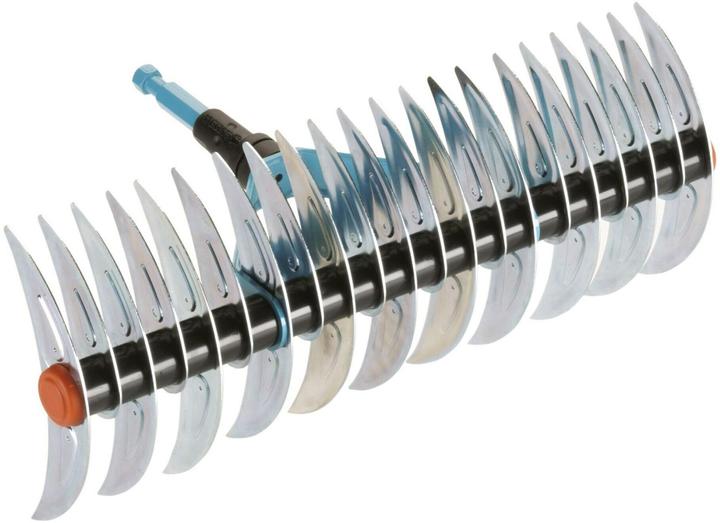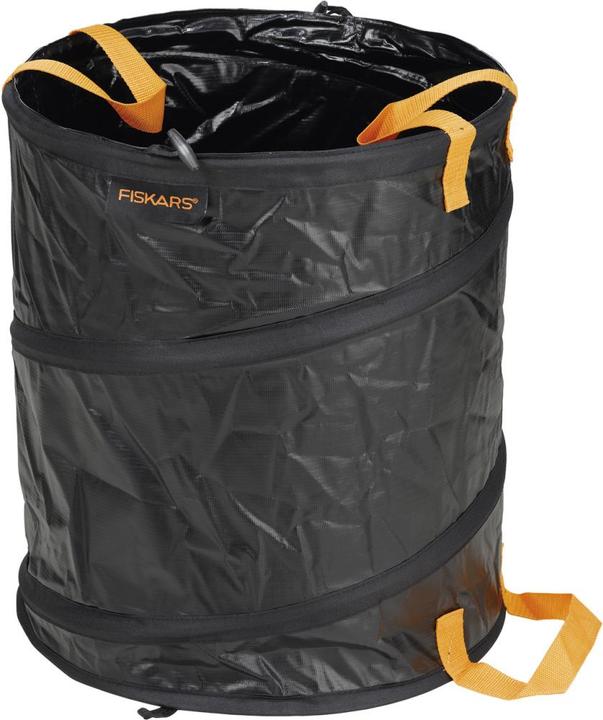

Rid your lawn of thatch
Your lawn needs some TLC in the form of a scarifier. Aerating your lawn prevents moss and encourages grass growth, but only if you do it correctly.
My gaze meets a forlorn scene. The flowerbeds are empty and the lawn's subdued tones make it less than inviting. Up until recently, it wasn't a problem. I spent most of my time inside in front of Netflix or with a good book. The garden didn't get a look-in. Now, though, signs of spring in the form of crocus blooms and melodic birdsong are starting to get me up off the sofa more often. All of a sudden, the fiasco outside my window is bothering me. It's time to wake the garden from its winter slumber.
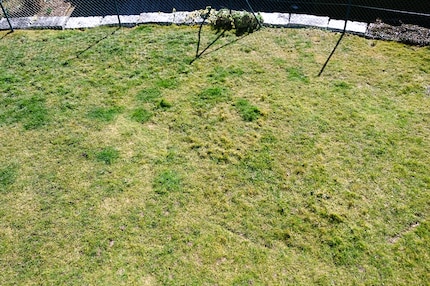
It looks like you all feel the same, judging by the trending categories. «Scarifying» has been high on the list for days. So that you'll be able to find your way more easily in future, I've compiled an overview of the topic.
How does scarifying work?
Lawn thatch consists of grass cuttings and dead plant matter. This layer lies between the grass and the ground and inhibits the exchange of light, water and nutrients, resulting in fungus, moss and reduced root growth. Your lawn becomes unhealthy. To prevent this, it's best to remove this layer of thatch via scarification once a year.
Which is the right scarifier for me?
Whichever scarifier you buy, the principle remains the same: fixed or rotating blades sit around a horizontal axis and you or a motor rotate it to cut into the turf and pull out the thatch. Your choice of petrol, electric or manual scarifier depends on your lawn.
Medium-sized, easily accessible lawns lend themselves to electric scarifiers. This affects neither the air nor your neighbours. The power cable provided is awkward, but you usually only need to use the product once or twice a year. If the cable bothers you, go for a battery-operated model such as the Einhell scarifier. But bear in mind: the battery is sold separately. The Bosch version comes with a cable, and a collection container avoids the need for raking after scarifying. A lot of electric models struggle and start to bobble on hard ground. If this is the case, a sandbag or something similar can help to weigh it down.
Petrol models, on the other hand, are best for maintaining large lawns. There's no troublesome cable, giving you the freedom needed for your sweeping plot. Its weight presses the blades deep down into hard, dry ground. This makes them more expensive and maintenance-heavy than their electric counterparts.
If you have a small garden, a manual model will do fine. It's tough on your arms, but the price is correspondingly lower and this is the most environmentally-friendly option. A hand scarifier is also worth having as a second tool for hard-to-reach areas. The Gardena version kills two birds with one stone. First, you use the sharp spikes to scarify the lawn, then you use the rake to collect the thatch. Bear in mind: all three tools require a separate stool, unless you want to scrabble around the whole time.
When should I scarify my lawn?
It's easy to tell whether your lawn needs to be scarified. Pick up a rake and loosely run it through the turf. If there are grass cuttings and moss hanging from the spikes, it's time for some lawn maintenance. Strong weed growth is another indicator.
The best time to aerate your lawn is between the end of March and the start of May in order to free the grass from the clutches of winter. It also recovers from scarification most successfully in spring. Generally speaking, however, you can do it at any time between late March and October. Just make sure that there are no frosts and that the lawn is dry during scarification. Along with moss, cuttings and weeds, insufficiently rooted blades of grass are also removed. This is why you shouldn't scarify a freshly seeded lawn. It's best to wait three years.
How do I do it properly?
The preparation stage begins around two to three weeks before the job itself. Fertilise the lawn so that it has enough nutrients for optimal regeneration. Judge by the daffodils at this stage. If they're in full bloom, it's time for spring fertilisation. Before scarifying, cut the lawn to two centimetres. This should be the lowest setting on your lawn mower. Now you're ready to start:
• Adjust your scarifier to the correct height. The blades should cut around three millimetres into the turf.
• Move the tool quickly and steadily over the desired surface.
• Scarify your lawn lengthways and then crossways.
• Rake up the thatch, preferably adding it to the compost.
• Resow any brown patches and gaps and water the lawn (unless rain is forecast).
Your work is done, at least as far as scarification is concerned. There are obviously still some strenuous hours in the garden to come. But all in good time.
My life in a nutshell? On a quest to broaden my horizon. I love discovering and learning new skills and I see a chance to experience something new in everything – be it travelling, reading, cooking, movies or DIY.
Practical solutions for everyday problems with technology, household hacks and much more.
Show all
